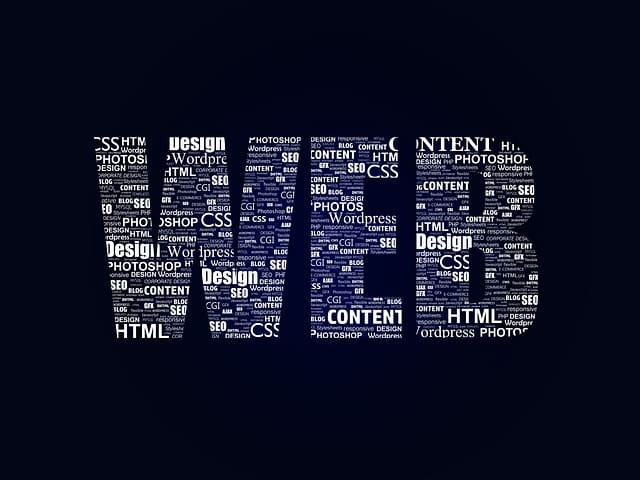Are you ready to create a website that not only looks beautiful but also works seamlessly? In today’s world, having an aesthetically pleasing website is crucial for attracting and retaining customers. But without proper functionality, it would all be for naught. Join us as we explore the magical connection between design and functionality and how it can revolutionize your online presence.
Defining Aesthetics and Functionality
The interconnection between the visual appeal and practicality of a website is essential in web design. Aesthetics involves artistry and beauty, whereas functionality pertains to usability and efficiency. Both must go hand-in-hand for an effective and engaging user experience.
Aesthetics in web design covers color schemes, typography, layout, and imagery. These are strategically placed to capture attention and communicate the message. A visually appealing website can draw visitors in and make them more inclined to explore.
On the other hand, functionality focuses on making a website easy to navigate, responsive, and providing a seamless experience. This involves optimizing loading times, implementing intuitive navigation menus, and incorporating interactive elements. The functional aspects of a website are vital for creating positive user experiences and ensuring ease-of-use and accessibility.
The perfect blend of aesthetics and functionality in web design requires thoughtful consideration of both visual appeal and practicality. By aligning these two aspects well, web designers can produce websites that look amazing and provide users with an enjoyable browsing experience. Aesthetics in web design: because making your website look good is like putting a suit on an online cat – it may not make it smarter, but it sure does make it more attractive.
The Importance of Aesthetics in Web Design
The aesthetics of web design are crucial for successful, attractive websites. Visuals, colors, typefaces, and layout all play a role in creating a great user experience. A well-crafted website grabs attention, boosts usability, and encourages user engagement. It also builds a brand identity and increases credibility. Combining functionality with aesthetically pleasing elements is essential for success.
The advantages of attention to aesthetics include:
| User Engagement | Aesthetic web design captures users’ eyes and encourages exploration. |
|---|---|
| Usability | Good visuals enhance the user experience by making navigation and content easy to understand. |
| Brand Identity | Visual elements convey the brand’s personality and values. |
| Credibility | A well-designed website builds trust with users. |
| Emotional Connection | Aesthetics can evoke emotions that resonate with users. |
| Competitive Advantage | Eye-catching web design sets businesses apart from their competitors. |
Designers should showcase their creativity and also ensure functionality is intact. By combining stunning designs and seamless user experiences, web designers can create websites that have a lasting impact on visitors.
A small boutique hotel had low online bookings despite having beautiful rooms and competitive prices. The reason? Their outdated website design. After revamping the site’s look with modern visuals and an improved user interface, the hotel saw a huge increase in online bookings. This example shows that aesthetic improvements can lead to huge business results.
Web design without functionality is like navigating a maze blindfolded – it’s a disaster!
The Importance of Functionality in Web Design
Functionality is a must-have in web design. It ensures an optimal user experience and smooth navigation. It involves creating interfaces that are intuitive, responsive, and efficient. So, designers can boost engagement, conversion rates, and online presence. Also, functional websites attract and keep visitors which increases traffic and better search engine rating.
Functionality goes beyond user experience. It includes website speed, compatibility with various devices and browsers, and accessibility for users with disabilities. Websites must load quickly, adapt to multiple screen sizes, and be accessible for all. That way, visitors can access content easily and have a great browsing experience.
Responsive design is one example of functionality in web design. With more people using smartphones and tablets, websites must be compatible. Responsive design adjusts layout based on the device. This not only makes it easier to use, but also helps with search engine rankings.
Amazon.com is a good example of the power of functionality. In 1999, they implemented one-click ordering and experienced significant growth. This shows how effective functionality can help businesses succeed in our digital world.
Web design combines beauty with brains, like finding a partner who is both attractive and can fix your computer.
How Aesthetics and Functionality Work Together
The Synergy Between Aesthetics and Functionality in Web Design
Web design combines aesthetics and functionality to create eye-catching and user-friendly websites. Combining these two elements is essential for an excellent user experience. It allows visitors to engage with content easily.
A user is drawn to the visuals of a website when they first land on it. Color schemes, typography, and layouts must be attractive. But, visuals are not enough. Websites must also have easy navigation, fast loading times, and intuitive user interfaces.
Aesthetics and functionality must work together. If a website looks great but is hard to navigate, users will become frustrated and leave. On the other hand, if a website works well but has no visual appeal, users won’t stay.
For example, an e-commerce website had great visuals and product images. But, it had poor navigation and a complicated checkout process. Many customers didn’t complete their purchases. The company fixed the website by improving navigation and simplifying the checkout process. As a result, their conversion rates increased.
Finding a balance between aesthetics and functionality in web design is like trying to get a unicorn and rainbow to have a meaningful conversation.
Creating a Balance Between Aesthetics and Functionality
Web design is the merging of visual appeal and practicality. Striking a balance between both is key. Elements such as color, layout, typography, and interactive features must be considered and aligned with the brand identity and target audience preferences. Functionality is also vital to enhance user engagement and satisfaction. The navigation structure should be intuitive and easy to use. Forms and search bars should be designed with usability in mind. Responsive design is a must, as people access websites from different devices. Finally, web design is successful when aesthetics and functionality are perfectly blended together.
The Role of Aesthetics in User Experience
Web Design, Indeed: Aesthetics’ Impact on User Experience.
Aesthetics are crucial in web design. It captures users’ attention and creates a positive impression. Plus, it improves usability by guiding users’ focus & creating an intuitive interface. Colors, typography & images evoke specific emotions, conveying the brand’s identity effectively.
Consistency across multiple pages & devices enhances familiarity & seamless navigation. With careful consideration of aesthetics, web designers have the power to connect users with the website.
Aligning aesthetic choices with the target audience’s preferences & expectations is essential. Tailoring visual aspects to resonate with their interests & desires helps strike a balance between aesthetics & functionality.
Remember, aesthetics alone cannot guarantee a successful user experience. It must be integrated with functional elements like easy navigation, fast-loading pages, mobile responsiveness & accessibility features. Web design without functionality is like an exquisitely designed car without an engine—pretty to look at, but utterly useless.
The Role of Functionality in User Experience
Functionality is key for a great user experience. By adding features and tools, navigation is smooth and goals are achieved quickly. Functionality influences how interactive, responsive, and intuitive a website is, affecting the user experience. Designers should focus on functional websites with quick load times and clear calls to action.
Functional sites attract more users and keep them on the site longer. Intuitive menus, search functions, and easy-to-use forms make users engage with content and complete desired actions. Functionality improves usability by making sure elements work together.
Functionality also helps with accessibility. Assistive technologies such as screen readers and keyboard navigation help individuals with disabilities access content. Including these functionalities in web design makes the website inclusive.
Designers must consider all aspects of functionality when designing. Optimizing page load speed and using responsive design for different devices are important for enhancing functionality. When designers prioritize functionality, they create websites that captivate and provide efficient tools.
Researchers studied the impact of improved functionality on performance indicators such as bounce rate and time spent on site. Results showed a decrease in bounce rate due to smoother navigation and faster loading times. This proves that emphasizing functionality benefits businesses and users.
Aesthetics and Functionality in Modern Web Design
Aesthetics and Functionality play a key role in modern web design. Visual appeal, user-focused design, brand identity, and optimized performance are all essential elements that contribute to a successful website.
To create an amazing website, it’s important to consider visuals like typography, color schemes, imagery, and layouts. Additionally, make sure the website is user-friendly with intuitive navigation, smooth interactions, and responsive designs. Also, ensure the website aligns with the brand’s identity by including appropriate branding elements.
Finally, for optimal performance, fast loading times, efficient coding practices, and compatibility across devices are required. Don’t forget about accessibility standards too!
Combining eye-catching visuals with user-friendly features is the secret to success in today’s digital landscape. Leverage the power of modern web design to stand out from the competition and make a lasting impression on your visitors.
Aesthetics and Functionality in Responsive Web Design
Responsive web design requires a balance between aesthetics and functionality. For optimal user experience, visual appeal and practicality must be seamlessly integrated. Features like color schemes, typography, and imagery create a visually pleasing experience. Navigation must also be intuitive for users to easily explore content. Performance should be optimized across different devices for smooth interactions. Cross-browser compatibility and accessible content are essential for a seamless user experience.
Finally, attention to detail is key, as loading time, responsiveness across different screen sizes, and consistency must all be taken into account. These best practices make up the foundation of successful responsive web design.
In eCommerce, these elements must come together to form an optimized shopping cart experience that keeps customers coming back.
Aesthetics and Functionality in eCommerce Web Design
When it comes to eCommerce web design, the marriage of visual appeal and practicality is essential. Design choices that are both beautiful and allow for effortless navigation and user interaction are critical for optimizing online shopping experiences. By combining attractive visuals with intuitive layouts, businesses can increase customer engagement, up conversion rates, and ultimately succeed in the competitive world of internet commerce.
To find the perfect harmony between aesthetics and functionality in eCommerce web design, several elements must be taken into account. These include color palettes, typography, images, and layout. The layout should prioritize usability with intuitive navigation menus, clear call-to-action buttons, and responsive design principles that adapt to various devices. This union ensures guests not only take pleasure in the website’s look, but also find it effortless to engage with its features as they progress through the buying journey.
Another aspect to consider when looking at aesthetics and functionality in eCommerce web design is accessibility. Ensuring that all users can access and use a website creates inclusivity for those with disabilities or those utilizing assistive technologies. Implementing WCAG standards helps increase usability by enabling features like keyboard navigation and alternative text for images. With accessible best practices and attractive design, businesses can create a seamless user experience for all customers.
Finally, personalization can increase aesthetics and functionality in eCommerce web design. Websites can leverage data collection and analysis tools, combined with AI algorithms, to customize content recommendations based on individual user preferences or past purchasing behaviors. This level of customization not only elevates the visual appeal with relevant product suggestions, but also boosts functionality by making decision-making easier for customers.
To make the most of aesthetics and functionality in eCommerce web design, businesses should:
- Prioritize an elegant and intuitive UI for easy website navigating.
- Use attractive visuals that embody the brand identity and evoke positive emotions in users.
- Employ responsive design principles for optimal display across devices.
- Embrace accessibility standards for inclusivity and usability.
- Leverage data analysis tools and AI algorithms to tailor content recommendations.
By properly considering aesthetics and functionality in eCommerce web design, businesses can create captivating online experiences that engage customers, increase conversions, and drive success in the ever-evolving digital landscape.
What is the importance of aesthetics in web design?
Aesthetics is essential in web design as it helps to visually appeal to the audience and create a positive first impression. It also helps in highlighting the brand’s identity and making the website stand out from others.
How does functionality impact web design?
Functionality plays a crucial role in ensuring a seamless and user-friendly experience for the website visitors. It involves the ease of navigation, loading speed, and overall performance of the website.
Why is the connection between aesthetics and functionality important in web design?
The connection between aesthetics and functionality is crucial as it ensures that a website not only looks visually appealing but also functions efficiently. It helps to create a balance between design and usability, leading to a better user experience.
What are some elements of web design that contribute to both aesthetics and functionality?
Some elements that contribute to both aesthetics and functionality in web design include color, typography, layout, images, and content placement. These elements work together to create a visually appealing and functional website.
How can a website balance between aesthetics and functionality?
A website can achieve a balance between aesthetics and functionality by keeping the design simple and user-friendly. This includes using a consistent color scheme, easy navigation, and optimizing images and other media for faster loading times.
Why is it important to regularly update the aesthetics and functionality of a website?
Regularly updating the aesthetics and functionality of a website helps to keep it relevant and appealing to the target audience. It also ensures that the website keeps up with the latest design trends and technological advancements, providing a better user experience.



